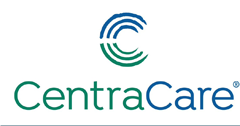Document Type
Article
Publication Date
7-2015
Abstract
Observational studies suggest that hematomas continue to enlarge during hospitalization in patients with traumatic brain injury (TBI). There is limited data regarding factors associated with hematoma enlargement and on whether hematoma enlargement contributes directly to death and disability in patients with TBI.
We analyzed data collected as part of the Resuscitation Outcomes Consortium Hypertonic Saline and TBI Study. Hematoma enlargement was ascertained and collected as a predefined safety endpoint. We evaluated the effect of hematoma enlargement on the risk of death and disability at 6 months based on the Extended Glasgow Outcome Scale (GOSE) (dichotomized as >4 or ≤4) using stepwise logistic regression analysis. We adjusted for age (continuous variable), admission GCS score (dichotomized at >5 and ≤5), and computed tomography (CT) scan classification (Marshall grades entered as a categorical variable).
Of the 1200 patients with severe TBI analyzed, 238 (19.8%) patients were reported to have hematoma enlargement as an adverse event. The proportion of patients who reached favorable outcome at 6 months was significantly lower (defined by GOSE of >4) among patients with hematoma enlargement (29.0% vs. 40.1%, p<.0001). The proportion of patients who died within 6 months was significantly higher among patients with hematoma enlargement (31.9% vs. 20.7%, p<.0001). After adjusting for age, admission GCS score, and initial injury score, the odds of favorable outcome was lower in patients with hematoma enlargement (odds ratio 0.7, 95% confidence interval [CI]; 0.5–0.97).
Our results suggest that hematoma enlargement may be a direct contributor to death and disability in patients with TBI at 6 months. Future clinical trials must continue to evaluate new therapeutic interventions aimed at reducing hematoma enlargement with a favorable risk benefit ratio in patients with TBI.
Recommended Citation
Qureshi, A. I., Malik, A. A., Adil, M. M., Defillo, A., Sherr, G. T., & Suri, M. F. K. (2015). Hematoma Enlargement Among Patients with Traumatic Brain Injury: Analysis of a Prospective Multicenter Clinical Trial. Journal of vascular and interventional neurology, 8(3), 42.

